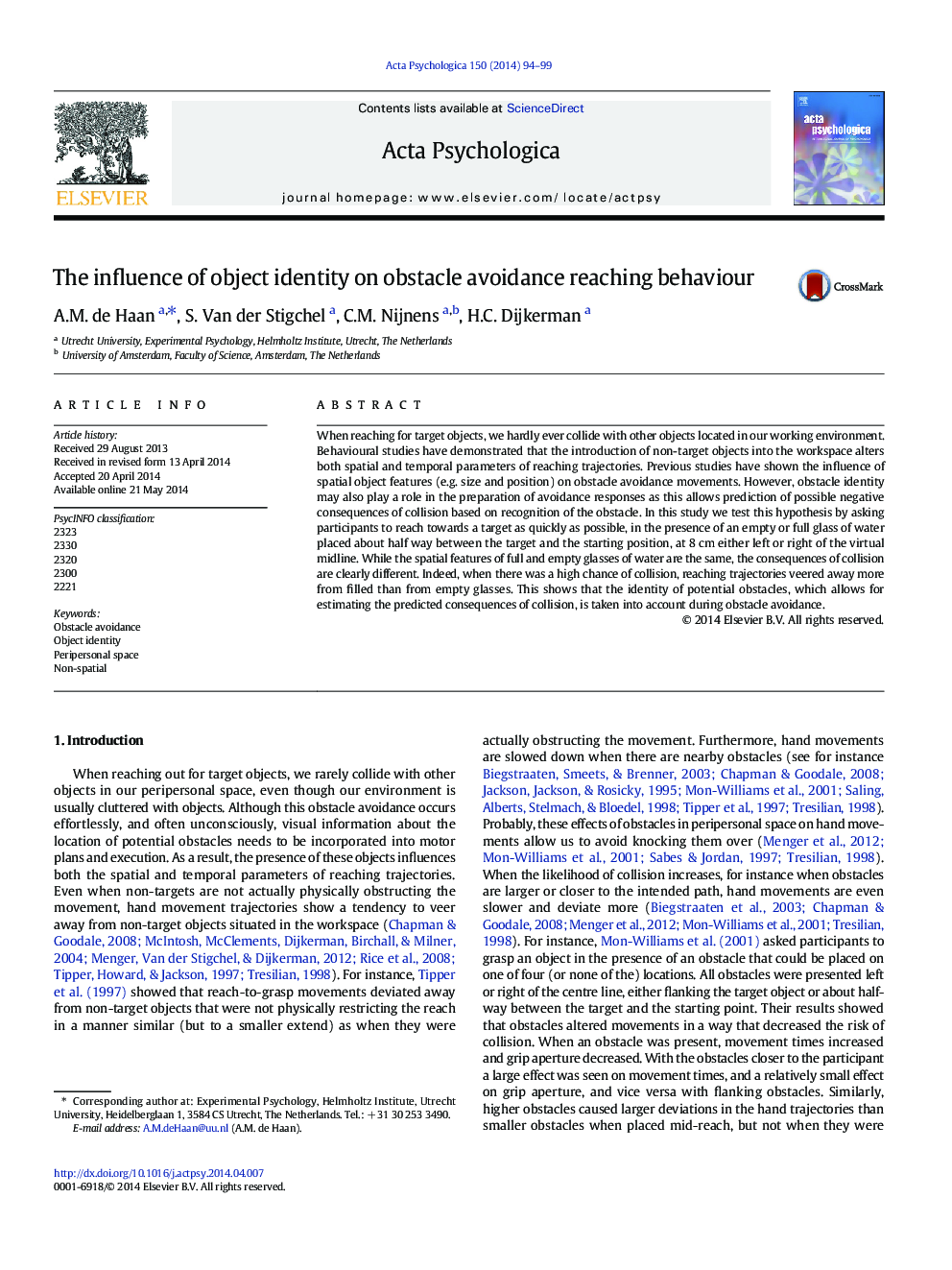| کد مقاله | کد نشریه | سال انتشار | مقاله انگلیسی | نسخه تمام متن |
|---|---|---|---|---|
| 919736 | 1473608 | 2014 | 6 صفحه PDF | دانلود رایگان |
• Participants reached for a target, passing an empty or full glass of water.
• These obstacles had equal spatial features but different consequences of collision.
• Reaching trajectories veered away more from filled than from empty glasses.
• Suggesting the consequences of collision influenced the reaching movements.
When reaching for target objects, we hardly ever collide with other objects located in our working environment. Behavioural studies have demonstrated that the introduction of non-target objects into the workspace alters both spatial and temporal parameters of reaching trajectories. Previous studies have shown the influence of spatial object features (e.g. size and position) on obstacle avoidance movements. However, obstacle identity may also play a role in the preparation of avoidance responses as this allows prediction of possible negative consequences of collision based on recognition of the obstacle. In this study we test this hypothesis by asking participants to reach towards a target as quickly as possible, in the presence of an empty or full glass of water placed about half way between the target and the starting position, at 8 cm either left or right of the virtual midline. While the spatial features of full and empty glasses of water are the same, the consequences of collision are clearly different. Indeed, when there was a high chance of collision, reaching trajectories veered away more from filled than from empty glasses. This shows that the identity of potential obstacles, which allows for estimating the predicted consequences of collision, is taken into account during obstacle avoidance.
Journal: Acta Psychologica - Volume 150, July 2014, Pages 94–99
